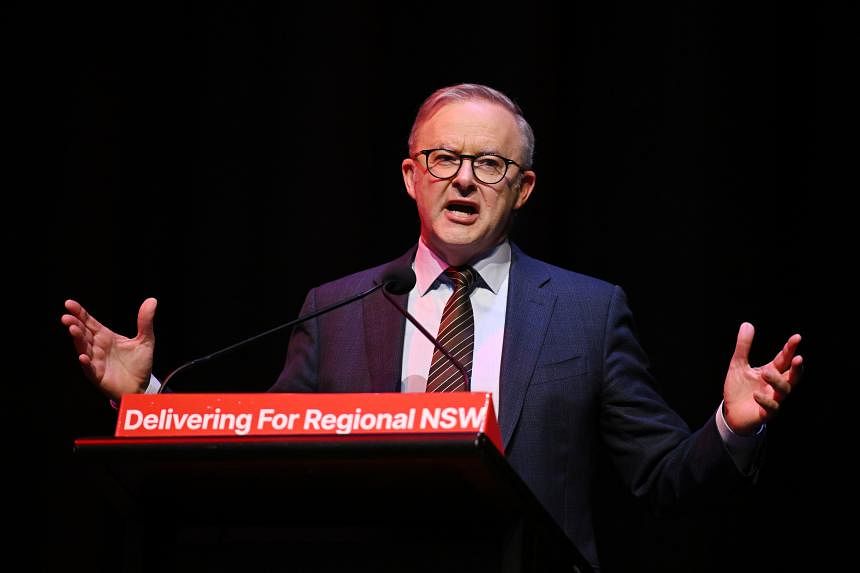KUALA LUMPUR – Australia will host, for just the second time, a summit with Asean on March 4 to 6, with expectations that it will make a concerted bid to restore its standing as a key economic partner.
Prime Minister Anthony Albanese launched the Invested: Australia’s South-east Asia Economic Strategy To 2040 report in Jakarta at last September’s Asean Summit, signalling his administration’s keenness to deepen trade and investment ties with its nearest regional neighbours.
Thus, the Australia-Asean Special Summit will be held in Melbourne, presenting an opportunity to lay the foundations of what Mr Albanese says is his country’s “economic future” in South-east Asia. The meeting also marks half a century since Canberra became the regional bloc’s first dialogue partner.
Invested – now widely known as the “Moore Report”, having been spearheaded by investment banker Nicholas Moore who is credited with building the Macquarie Group’s Asia-Pacific footprint – outlines how Asean member states have outpaced the growth of Australia’s traditional economic partners and will continue to do so.
Yet the region’s share of Australian trade has been stagnant for two decades and, as at 2022, hosts less than 3 per cent of Australian foreign investment, which dropped by more than half in the preceding five years.
Add to that tensions with China since the Covid-19 pandemic and the need for Australia to seek greener pastures, not just for continued growth but also to reduce concentration risk with its top trade partner, and the pivot to South-east Asia is seemingly a no-brainer.
Australian Senate opposition leader and shadow foreign minister Simon Birmingham, however, notes the challenge of overcoming “perceptions of political instability or risk” stemming in no small part from a “lack of cultural understanding or awareness” of Asean.
“But we’ve managed to overcome those things with the giant (of Asia) in China. We are lucky, in that for us, (Invested) brings us still back in many ways to the region that we’ve always sought to pursue the relationships with, but where we need to double down on pursuing them as strongly as we possibly can,” the immediate past finance minister told The Straits Times.
Still, Australia’s prestige as a regional economic powerhouse appears to have lost its shine, even though it is still a key defence partner and widely viewed as Washington’s “deputy sheriff” of the Indo-Pacific.
Most Asean leaders who will gather in Melbourne – six years after Australia hosted them for the first time – come with China as their largest trading partner and the United States among its top investors (the US invests more in Asean than in China, Japan, South Korea and India combined).
Amid the geopolitical tensions between Washington and Beijing, the strategic imperative to keep these superpowers happy will mean Australia starts at a disadvantage in this economic beauty contest.
“In certain circles, there is a prevailing complacency in acknowledging the benefit and the need to do the hard yards in getting to know new markets. Australian businesses have a lot to offer. At the same time, there’s work to be done to build ‘Asia Capability’ to support expansion into new markets,” Melbourne-based consultancy Asialink Business’ chief executive Leigh Howard told ST, noting that Australia is not the only country competing for engagement with the region.
He also pointed out how selling commodities to China has served Australia well, but “it is crucial to distinguish this from investing in a market (and) establishing a physical presence in-country”. He noted that “how you interact, foster relationships, and build a deeper understanding of the local market... will be critical to the success of Australian businesses venturing into South-east Asia”.
Curiously, while Asean’s share of global foreign direct investment inflows has more than doubled in a decade to 17.3 per cent in 2022, Australia’s part in this has shrunk. It is not just traditional intra-Asean investment or heavyweights like the US, United Kingdom, China, Japan and South Korea that are ahead of Australia either, but French and Dutch businesses too.
This is despite decades of political, education and cultural ties dating back to World War II, a million-strong South-east Asian diaspora, and one of the world’s biggest economies, Indonesia, being right at its doorstep.
Many analysts and policymakers see a general conservatism within Corporate Australia, coming off the back of – Covid-19 aside – 25 years of prosperity since the last recession in the late 1990s.
“There is a sense of ‘why risk losing my shirt?’,” one senior diplomat said.
This is probably why Canberra’s earlier 2017 report Asean Now, that also talked up the opportunity that is South-east Asia, failed to gain traction.
Since then, the region has grown from a US$2.5 trillion (S$3.4 trillion) market representing 3.4 per cent of the world’s economy to a US$3.6 trillion market, or 3.6 per cent of the world’s economy.
However, all is not rosy for the bloc, and the Asean Economic Community (AEC) launched in 2015 as a blueprint for the regional economy to be highly integrated by 2025 has not been realised.
But Malaysia’s Deputy Investment, Trade and Industry Minister Liew Chin Tong told ST that while it will be a challenge for Asean to be fully integrated in the near term, there is an opportunity to be more vertically integrated.
For example, a supply chain that stretches from Singapore as a financial centre, with industrial manufacturing in Malaysia and labour-intensive work in Indonesia, could be considered.
Said Mr Liew: “We are the closest economy that can actually strengthen Australia’s economy. Because of our varying degrees of development, you can do the high-end stuff, whereas some of the other work can happen here.
“And really, if we’re talking about a shift away from China, there’s no other place that can serve as the near shore to Australia.”


